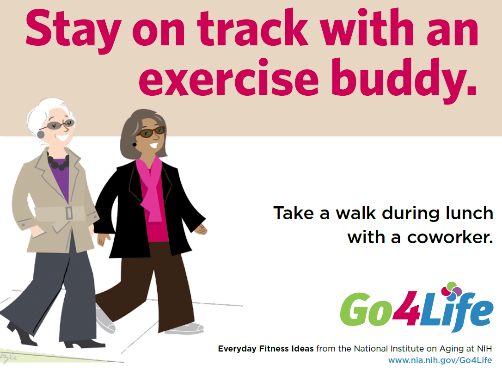by Amy Mullins, PhD, RDN | Oct 26, 2017
 We all have family traditions that make our holiday celebrations special. From your great-great-grandma’s sweet potato casserole or pecan pie, to your mother-in-law’s sausage stuffing or decadent plum pudding, there’s one thing that always seems to be a common factor among traditional holiday dishes: a massive amount of, fat, sugar, salt, and calories!
We all have family traditions that make our holiday celebrations special. From your great-great-grandma’s sweet potato casserole or pecan pie, to your mother-in-law’s sausage stuffing or decadent plum pudding, there’s one thing that always seems to be a common factor among traditional holiday dishes: a massive amount of, fat, sugar, salt, and calories!
It’s not only a single meal but rather an entire season of parties, events, gatherings festivities, and unhealthy choices that add up to that holiday weight gain we resolve to lose when January rolls around. As the holiday season begins its rapid approach, take time and consider those past eating habits that set your new year off on the wrong foot. Why not make a resolution now to eat healthier this holiday season?
Just a few simple strategies can help make the difference and keep those unwanted pounds away. Here are some suggestions:
- Don’t skip meals. Eating healthy on a regular basis will keep you from overindulging at holiday gatherings.
- Use smaller plates for meals and gatherings and be mindful of portions
- Choose more vegetables and smaller helpings of entrees and desserts
- Drink more water and minimize alcoholic drinks and eggnog
- Make healthier recipe ingredient substitutions when cooking and baking (Mayo Clinic):
- Instead of heavy cream, use fat free half and half or evaporated skim milk
- Instead of bacon, try Canadian bacon, turkey bacon or smoked turkey
- Decrease sugar in baked goods by half and add vanilla, nutmeg, or cinnamon to intensify sweetness
- Substitute applesauce or prune puree for half of the butter, shortening, or oil
- Use two egg whites or ¼ cup egg substitute for each whole egg
- Replace salt with fresh or dried herbs and spices.
We can all still experience the joy of the holiday season, without making food the focus. Make a resolution to be mindful and eat healthier this holiday season, and your waistline will thank you.
Some additional links that you may find helpful:
https://healthyforgood.heart.org/eat-smart/articles/holidays-healthy-eating-guide
https://www.cdc.gov/features/HealthyResolutions/
https://choosemyplate-prod.azureedge.net/sites/default/files/printablematerials/2013-HolidayMakeover.pdf
https://www.mayoclinic.org/healthy-lifestyle/nutrition-and-healthy-eating/in-depth/healthy-recipes/art-20047195?p=1
by Amy Mullins, PhD, RDN | Aug 24, 2017
 It’s something we all hopefully learned as children and carry with us now into adulthood: washing our hands often and properly. But I’m sorry to say that we’ve probably all witnessed numerous instances of people leaving the restroom, coughing or sneezing, touching their cell phones or any number of other filthy surfaces, and then neglecting to wash their hands. According to a research study from Michigan State University (2013), only 5% of people washed their hands properly after using the toilet with 7% of men and 15% of women not washing their hands at all. This type of behavior is a recipe for disaster, leading to the spread of germs and pathogens.
It’s something we all hopefully learned as children and carry with us now into adulthood: washing our hands often and properly. But I’m sorry to say that we’ve probably all witnessed numerous instances of people leaving the restroom, coughing or sneezing, touching their cell phones or any number of other filthy surfaces, and then neglecting to wash their hands. According to a research study from Michigan State University (2013), only 5% of people washed their hands properly after using the toilet with 7% of men and 15% of women not washing their hands at all. This type of behavior is a recipe for disaster, leading to the spread of germs and pathogens.
Germs and pathogens are invisible and ubiquitous, living on every imaginable surface. Even though they can’t be seen by the naked eye they have the ability to make us very sick, and can even be deadly. According to Dr. Charles Gerba, a microbiologist with the University of Arizona, a typical cell phone has approximately 25,000 germs per square inch! We spread germs very easily from surface to surface and from hand to mouth, increasing the potential for illness to ourselves and others every step of the way. If these germs contaminate food contact surfaces or the food we eat, the likelihood for a foodborne illness has been created. Common symptoms of foodborne illness include diarrhea, vomiting, nausea, and abdominal cramps. The Centers for Disease Control and Prevention (CDC) estimates that each year roughly 1 in 6 Americans (or 48 million people) gets sick, 128,000 are hospitalized, and 3,000 die of foodborne diseases.
The good news is that we all have the power to stop the spread of germs. The Food and Drug Administration says that “washing with plain soap and running water remains one of the most important steps consumers can take to avoid getting sick and to prevent spreading germs to others.”
It’s good practice to always wash your hands (CDC):
- Before, during, and after preparing food
- Before eating food
- Before and after caring for someone who is sick
- Before and after treating a cut or wound
- After using the toilet
- After changing diapers or cleaning up a child who has used the toilet
- After blowing your nose, coughing, or sneezing
- After touching an animal, animal feed, or animal waste
- After handling pet food or pet treats
- After touching garbage
Are you following these steps to proper handwashing (CDC)?
- Wet your hands with clean, running water (warm or cold), turn off the tap, and apply soap.
- Lather your hands by rubbing them together with the soap. Be sure to lather the backs of your hands, between your fingers, and under your nails.
- Scrub your hands for at least 20 seconds. Need a timer? Hum the “Happy Birthday” song from beginning to end twice.
- Rinse your hands well under clean, running water.
- Dry your hands using a clean towel or air dry them.
Soap and water may not always be available, so using hand sanitizer is the next best thing. Although hand sanitizers don’t kill all germs, the CDC recommends choosing a sanitizer with at least 60% alcohol to significantly reduce the number of germs and pathogens on your hands.
For more information on handwashing and hand sanitizers refer to the CDC Handwashing Factsheet. Additional information about foodborne illnesses and the pathogens that cause them can be found at https://www.cdc.gov/foodsafety/foodborne-germs.html
by Amy Mullins, PhD, RDN | Apr 3, 2017
 It’s no secret that exercise is good for you and can improve your life in so many ways. The idea of exercise can be daunting for some people, especially if you’ve never done it on a regular basis. You don’t have to go to the gym and lift weights or run a half -marathon to “exercise.” It’s important to keep in mind that many different types of physical activity can be considered exercise and can get you on the path to feeling great every day.
It’s no secret that exercise is good for you and can improve your life in so many ways. The idea of exercise can be daunting for some people, especially if you’ve never done it on a regular basis. You don’t have to go to the gym and lift weights or run a half -marathon to “exercise.” It’s important to keep in mind that many different types of physical activity can be considered exercise and can get you on the path to feeling great every day.
Benefits of physical activity include:
- Increasing your chances of living longer
- Feeling better about yourself
- Decreasing your chances of becoming depressed
- Sleeping well at night
- Moving around more easily
- Having stronger muscles and bones
- Achieving and maintaining a healthy weight
- Being with friends or meeting new people
- Enjoying yourself and having fun!
Consider some new ways to become active such as:
- Volunteering within your community
- Taking group walks around the neighborhood
- Taking up gardening and growing vegetables or flowers
- Doing stretches and chair exercises throughout the day and while watching TV or on the computer.
The idea is to find FUN activities that will keep you moving, active, and engaged. If you decide to start a more rigorous exercise regimen, make sure to ask your doctor first.
Always keep proper hydration in mind, especially when exercising outdoors during the summer heat. Dehydration is a leading cause of hospitalization and serious health problems for older adults. Signs and symptoms of dehydration include headaches, constipation, muscle cramps, dry mouth, sleepiness, and rapid heart rate. It’s important to hydrate yourself with at least eight 8-oz. cups of water during the day. Stay ahead of the game and don’t wait until you’re thirsty to drink… by then, you are already dehydrated.
The National Institutes of Health, National Institutes on Aging recommend making these five tips a priority everyday:
- Try to be physically active for at least 30 minutes on most or all days of the week
- Eat plenty of fruits and vegetables
- Choose foods that are low in added sugars, saturated fats, and sodium
- Pick whole grains and lean sources of proteins and dairy products
- Practice all four types of exercise: endurance, strength, balance, and flexibility
For more information about exercise, hydration, nutrition, and safety for older adults, visit https://go4life.nia.nih.gov/.
by Amy Mullins, PhD, RDN | Feb 21, 2017

National Nutrition Month® is a month-long nutrition education and information campaign that is put on by the Academy of Nutrition and Dietetics. This year’s theme is “Put Your Best Fork Forward.” The idea behind the theme is that every bite counts and that taking small steps to change our eating habits can result in positive, lifetime changes! This idea is one that every Registered Dietitian Nutritionist (RDN) is familiar with. RDNs are taught very early on that for a goal to be met, it is key that it is both achievable as well as personalized to their client’s eating style. Put Your Best Fork Forward is really about finding ways to be healthy that you enjoy.
National Nutrition Month® 2017 has five key messages that will help you find your healthy eating style.
- Create an eating style that includes a variety of healthful foods that you enjoy. As they say, it’s not nutrition if it’s not eaten!
- Practice cooking at home and be willing to try new, healthier ingredients. There are plenty of cooking apps and recipes available on eatright.org and other reputable internet sites. Pick one and give it your best shot!
- Follow MyPlate guidelines when building your meal. MyPlate replaced the Food Pyramid in the year 2011 and has a bigger focus on portion size and building a healthy plate at every meal.
- Finding physical activity that you enjoy is important. This can be playing with your pet, pacing while you talk on the phone or joining a team sport. Anything you will enjoy that gets you moving!
- RDNs are skilled in all things diet and are the best source of personalized nutrition advice for you. They are able to assist you in making healthful changes that you’ll enjoy making!
Some examples of small changes in eating patterns are to: exchange a whole grain for a refined grain once a week, eat dinner in the dining room on Fridays, or plan to enjoy a home-cooked meal twice a month. These changes should be incorporated until you feel comfortable with them. Then, they could be changed to eating whole grains twice a week, eating dinner in the dining room Thursday and Friday or eating a home-cooked meal once a week. These modest shifts in our eating patterns can become healthy habits we enjoy for life.
Resources:
Academy of Nutrition and Dietetics
http://www.eatright.org/
MyPlate Website
https://www.choosemyplate.gov/
Contributing author – Sydney Nutting, FDACS Intern, Spring 2017

by Amy Mullins, PhD, RDN | Nov 16, 2016
 Ever feel like you’re moving through your work day at the speed of light with barely enough time to eat, much less eat healthy? The combination of stress, poor eating habits, and lack of exercise can lead to becoming overweight and the development of chronic health conditions such as type-2 diabetes, high blood pressure, and cardiovascular disease. Numerous studies have shown that stress can lead to poor nutritional choices including:
Ever feel like you’re moving through your work day at the speed of light with barely enough time to eat, much less eat healthy? The combination of stress, poor eating habits, and lack of exercise can lead to becoming overweight and the development of chronic health conditions such as type-2 diabetes, high blood pressure, and cardiovascular disease. Numerous studies have shown that stress can lead to poor nutritional choices including:
- Choosing a sugary and/or caffeinated drink over water
- Grabbing convenience foods more often, which usually are not healthy choices
- Forgetting meals and making poor choices later in the day, ultimately eating more calories, sugar, fat, and sodium
The fact is we are all busy. But, if we don’t take the time to care for ourselves, we may be headed down a dangerous path of self-destruction. It only takes a small amount of time to take the right steps toward better health.
Here are some tips to get you started:
- Simplify! Instead of being overly concerned with counting calories or measuring portion sizes, think of your diet in terms of color, variety, and freshness.
- Start slow and make changes to your eating habits over time.
- Every change you make to improve your diet matters!
- Think of water and exercise as food groups in your diet.
- Moderation is key. Try not to think of certain foods as “off limits,” but, rather, think smaller portions.
- It’s not just what you eat, it’s how you eat. Mindful eating – listen to your body and take time to enjoy your food and mealtimes.
- Fill up on fruits and vegetables.
- Choose whole grains.
- Focus on healthy fats and limit saturated fats and fried foods.
- Try different types of lean protein.
- Limit sugar and salt.
- Plan Ahead
- Take the time to make a grocery list before going to the grocery store
- Plan and pack nutritious snacks for work
- Prepare meals for the week ahead of time
- Consider your options when eating out
- Portion out meals and snacks ahead of time
- Have water available all day
- Incorporate Exercise into Your Daily Routine
- Choose the stairs over the elevator
- Walk during breaks
- Turn housework into exercise
- Walk the dog
- Park further away when you drive to the store
- Play outside with your kids
Remember, nothing is more important than your health and the health of your family. Set a good example for those you love by taking care of yourself. They will be thankful you made plans to be around for many years to come!
For more information about this topic or other nutrition and wellness-related topics, contact Amy Mullins, MS, RDN at amymullins@ufl.edu.
 We all have family traditions that make our holiday celebrations special. From your great-great-grandma’s sweet potato casserole or pecan pie, to your mother-in-law’s sausage stuffing or decadent plum pudding, there’s one thing that always seems to be a common factor among traditional holiday dishes: a massive amount of, fat, sugar, salt, and calories!
We all have family traditions that make our holiday celebrations special. From your great-great-grandma’s sweet potato casserole or pecan pie, to your mother-in-law’s sausage stuffing or decadent plum pudding, there’s one thing that always seems to be a common factor among traditional holiday dishes: a massive amount of, fat, sugar, salt, and calories!




